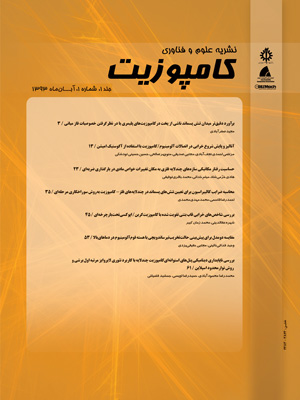نوع مقاله : مقاله پژوهشی
نویسندگان
1 دانشجوی کارشناسی ارشد، مهندسی مکانیک، دانشگاه صنعتی نوشیروانی بابل، بابل
2 دانشیار، مهندسی مکانیک، دانشگاه صنعتی نوشیروانی بابل، بابل
چکیده
در این پژوهش، نانوکامپوزیت منیزیم- 20 درصد حجمی کاربید سیلیسیم بهروش آسیاکاری مکانیکی تهیه شد. اثر زمان آسیاب بر مشخصههای ریزساختاری نانوکامپوزیتهای حاصل شامل اندازه دانه، میزان کرنش شبکه، توزیع ذرات تقویتکننده و فازهای موجود توسط میکروسکوپ الکترونی روبشی مجهز به طیف سنج اشعه ایکس و الگوی تفرق اشعه ایکس بررسی شد. اندازه دانه و میزان کرنش شبکه منیزیم بهروش ویلیامسون – هال و با استفاده از میزان پهن شدگی پیکهای منیزیم در الگوی تفرق اشعه ایکس محاسبه شد. نتایج بهدست آمده نشان داد که آسیاکاری مکانیکی ترکیب پودری تا 25 ساعت آسیاب، منجر به تشکیل هیچ گونه ترکیب بین فلزی نشده است. همچنین نتایج آنالیز عنصری، توزیع نسبتا یکنواخت ذرات فاز تقویتکننده در زمینه منیزیم را بدون آگلومراسیون نشان داد که میتوان نتیجه گرفت که روش آسیاکاری مکانیکی میتواند برای ساخت نانوکامپوزیت با 20 درصد حجمی ذرات کابید سیلیسیم استفاده شود. با این وجود، مشاهده ناخالصی آهن در نتایج آنالیز عنصری را میتوان از نقاط ضعف این فرایند در ساخت کامپوزیت ذکر کرد.
کلیدواژهها
موضوعات
عنوان مقاله [English]
Effect of milling time on microstructural characteristics of Mg-20 %vol SiC composite produced by mechanical milling
نویسندگان [English]
- Saeed Bemanifar 1
- Mohammad Rajabi 2
- Seyed Jamal Hoseinipoor 2
1 Department of Material Science and Engineering, Noshirvani University of Technology, Babol, Iran
2 Department of Material Science and Engineering, Noshirvani University of Technology, Babol, Iran
چکیده [English]
In the present study, Mg–20 vol% SiC nanocomposite powders were produced by mechanical milling. The effect of milling time on the microstructural characteristics of nanocomposite powders during mechanical milling was investigated. The structural evolution during milling was monitored using scanning electron microscopy (SEM), energy dispersive spectrometry (EDS), X-ray mapping and X-ray diffraction methods. Crystallite size and lattice strain of nanocomposite powders were estimated from the broadening of XRD peaks by Williamson-Hall equation. The results indicated that no intermetallic phases have been synthesized during ball milling; also X-ray map’s results exhibited a uniform distribution of reinforcement particles in magnesium matrix without any agglomeration. With all this taken into account, it can be demonstrated that mechanical milling can be used for producing Mg nanocomposite with 20 percent SiC particles. In spite of all that, the observation of Fe impurity in EDS results can be a weak point of mechanical alloying rout for fabricating Mg- 20% SiC nanocomposite
کلیدواژهها [English]
- Magnesium matrix nanocomposites
- SiC
- Mechanical milling
- Microstructure
